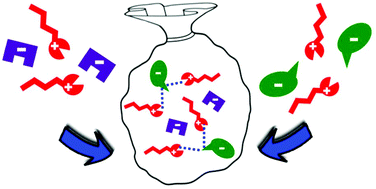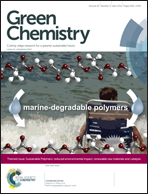Mixing ionic liquids – “simple mixtures” or “double salts”?
Abstract
In the third issue of the then new journal Green Chemistry (2001, 3, 156–164), we published our first paper describing the physical properties of a few hydrophilic and hydrophobic ionic liquids (ILs) representing one of the first such studies to be published. To help celebrate the 15th anniversary of the Journal, we revisit the ‘design’ aspect of ILs by reviewing the growing area of what most are calling ‘ionic liquid mixtures’. In 2001, designing IL properties meant essentially independent variation or synthesis of the cations and anions and determining what physical or chemical properties these liquid salts possessed. Recently, however, the mixing of ILs has been proposed and investigated as a way to add increased scope to the accessible properties of IL media. In this review, we question whether the same thinking and approach used for organic solvent mixtures should be applied to ILs simply because of the way they were made. Unlike organic solvent mixtures, IL compositions of varied ions, do not retain their individual nature, need not be made by simple mixing of two-ion salts, and preferential interactions of a given cation for a given anion are possible in these 3-ion, 4-ion, or higher order liquids. When two ILs are mixed together, one can't identify which ion is from which IL, and the chemistry is simply not based on the identity of the individual ILs, but on the ions comprising them and the interactions of each individual ion, independently of the counterion. Thus, we ask if it would not be better to consider these as unique ion combinations whose solvent properties are derived from the specific choice and abundance of each ion in the system. Through this review of the available literature, we support the concept of Double Salt Ionic Liquids (DSILs) and discuss the interactions involved in these systems, by examining their physicochemical properties and the novel applications they offer.

- This article is part of the themed collection: 15 Years of Green Chemistry

 Please wait while we load your content...
Please wait while we load your content...